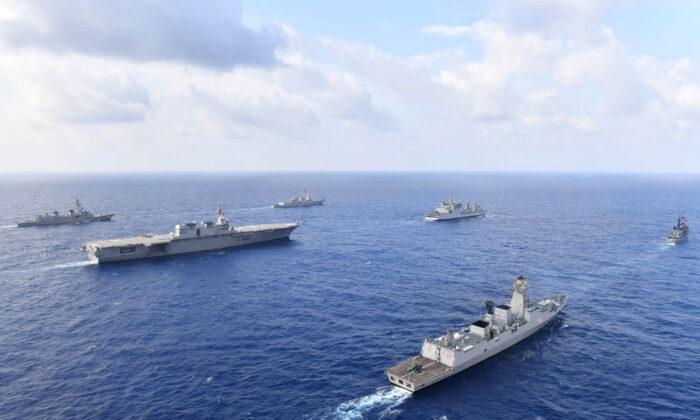Japan’s prime minister vowed on Nov. 6 to bolster Japan’s defenses alongside the United States and its allies as the country hosted another international fleet review to mark the birth of its naval forces.
The review was held in Sagami Bay near Tokyo with the participation of 18 vessels from 12 nations, including the United States, South Korea, the UK, Australia, Singapore, India, and Thailand, as the region faces increasing tensions from North Korea’s missile and nuclear threats, Russia’s invasion of Ukraine, and aggression by the Chinese Communist Party (CCP) toward Taiwan.
Speaking at the review, Japan’s centrist prime minister, Fumio Kishida, pledged to bolster the deterrence and response capabilities of the Japan–U.S. alliance amid the “severe” security situation in the East and South China Seas.
Kishida said North Korea’s repeated missile launches, including one that flew over Japan last month, and Russia’s invasion of Ukraine were “absolutely unacceptable” and must not be tolerated.
“Japan will formulate a new national security strategy by the end of the year and drastically strengthen its defense capabilities within five years. We are accelerating realistic consideration of what is necessary to protect the public without excluding all options.”
Kishida’s Liberal Democratic Party has pledged to double Japan’s defense budget to roughly 2 percent of the country’s gross domestic product within five years.
He said Japan will maintain its “post-war peace-loving” stance even as it seeks to strengthen defense capabilities and provide the international community with a “transparent explanation” of its security initiatives.
“I would like to ask the participants of each country in this forum to strive to explain their security policies in a transparent manner,” Kishida said.
“What upsets China most is we have allies; they are expansive and extensive,” he said after accompanying Kishida on a tour of the Ronald Reagan.
China declined Japan’s invitation to participate in its international fleet review. It had planned to participate in the last parade in 2019 before it was canceled.
South Korea joined for the first time since 2015 in a sign of thawing relations between the two nations over wartime forced labor disputes.
Japan refused to join South Korea’s fleet review in 2018 after it was asked to not fly its rising sun ensign, which South Korea views as a symbol of Japanese wartime aggression. Japan didn’t invite South Korea to a planned 2019 review.





